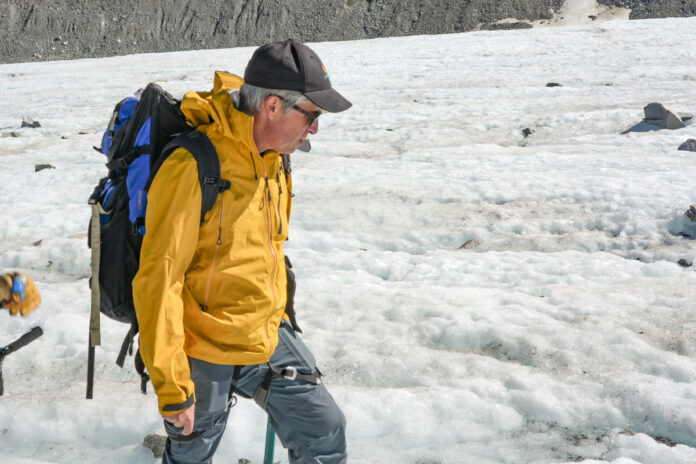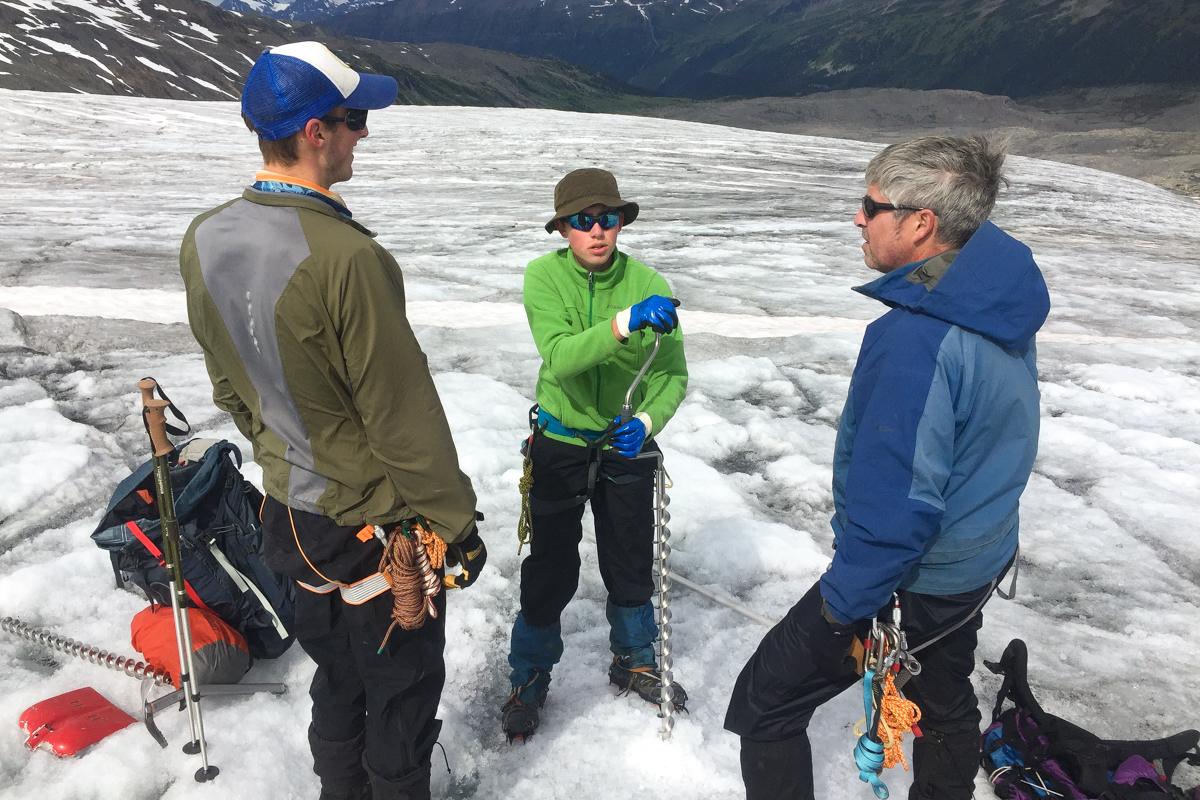

By: Evert Lindquist, The Charlatan
OTTAWA (CUP) — A team of international researchers has projected most Western Canadian glaciers will melt away in less than 80 years, based on a study using new modelling techniques and a supercomputer at the University of Northern British Columbia (UNBC).
The study, published in January in the Science journal, notes that a projected global temperature increase of 2.7 ℃ would cause “widespread deglaciation in most mid-latitude regions” by the year 2100. B.C. and Alberta host more than 15,000 glaciers that hold approximately 23,000 square kilometres of ice, according to Prof. Brian Menounos of UNBC’s geography program.
Menounos, who serves as the Canada Research Chair in Glacier Change and co-authored the study, said it built on previous work that looked at how glaciers will respond to future changes in precipitation and temperature.
This most recent study modelled Earth’s estimated 200,000 glaciers to simulate changes over time in their dimensions and mass.
“You can actually look at this balance between how much mass is accumulated in the winter [and] how much is lost,” Menounos said. “If you did that year after year, you are going to get the integrated signature of climate and how climate change may actually cause that glacier to expand—if it’s cooler and wetter—or shrink.”
Glaciers should exist in balance with climate, Menounos explained, but even the most extreme scenarios of reversing global warming at this point would do little to save them.
“If you suddenly turned off the greenhouse warming effect tomorrow, those glaciers would continue to lose mass,” he said. “Depending on where they are, they may lose something like one half of their mass, and that’s simply because they’re so out of balance with present-day climate.”
He added that while higher-elevation glaciers such as those in the Columbia Icefield between B.C. and Alberta would stabilize and continue to have small amounts of ice, many others would completely disappear.
The UNBC supercomputer helped the researchers examine how much mass glaciers have already lost in the last 20 years. Using space observations from NASA satellite ASTER, the computer collected stereo images of Earth’s surface that showed the change in glacier sizes. Up north, the researchers used another supercomputer at the University of Alaska Fairbanks to calculate glacier mass and how it changes based on location.
Losing an ‘iconic’ Canadian landscape
Glaciologists have been monitoring Place Glacier in the B.C. Interior since 1965. Responsible for some of this work is Mark Ednie, an Ottawa-based glaciologist for Natural Resources Canada. He said this roughly three-square-kilometre glacier is falling by four or five metres of ice per year and has thinned by an average of 51 metres per year since the ‘60s.
“They’re not growing anymore,” Ednie said in reference to Western Canada’s glaciers. “They’re just melting. There’s no mass [remaining] in terms of snow that’s lasting throughout these summer months anymore.”
Ednie added that the Columbia Icefield, for example, accumulates only five or six metres of snow during winter and loses two-thirds of it by fall. He said the icefield, currently the largest in the Canadian Rockies, will eventually reduce to a “small little dome of ice.”
Ednie called glaciers “iconic” parts of the Canadian landscape that provide unique knowledge of the country’s past and future, and have acted as indicators of climate change for more than 100 years.
But he said Peyto Glacier in Banff National Park retreated by between 200 and 300 metres in one summer during the 2021 heat wave in Western Canada, dwarfing the annual average of between 50 and 100 metres. Ednie could hike straight onto the glacier as recently as 2017, but a new glacial lake around its crumbling base has made it nearly impossible to access on foot.
“It’s actually a problem for us because now we have to spend more money flying helicopters onto these sites than hiking onto them,” he said. “They’re just changing year to year now.”

Mackenzie Ostberg, a fourth-year human geography student at UNBC, said water melt from glaciers keeps streams cool enough for salmon to spawn. Ostberg added glaciers normally deflect radiation off their surfaces so the energy can’t absorb into the ground, but the severity of forest fires in B.C. has covered glaciers in soot and caused more radiation to settle.
“As climate changes, as forest fires occur, as the snow grains up on the glacier coarsen, as the snow becomes wet, all of these factors can darken these surfaces,” Menounos said. “This darkening can accelerate or enhance how fast [glaciers] melt.”
Ostberg, who minors in global environmental change and serves as vice-president (internal relations) for the Students for a Green University club, participated in a mountain hydrology and remote sensing field course last spring in the Columbia Icefield.
“[Glaciers] are kind of imperative to our hydrological cycles,” she said. “They melt in the summer and that water goes to different streams, rivers, watersheds, basins. It’s used for hydropower that we’re dependent on.”
Hope and preparation for the future
Ednie encouraged people to “enjoy what we have now” with these glaciers but to also “prepare for the future” by reducing energy and water use.
“As less and less water comes off these glaciers, we’re going to start seeing less and less water flow through the late summer months,” he said.
Menounos said he remains hopeful people will act on reducing greenhouse gas emissions but also feels pessimistic and ambivalent.
“It is not an easy task to rapidly decarbonize, but it is critically needed, not just for glaciers, but for a whole host of environmental factors,” he added.
Ostberg said having stricter regulations around resource extraction and larger emission reduction goals earlier on could have yielded a more promising future for Western Canadian glaciers.
“Now that we’re seeing that they are disappearing not only over hundreds of years, but in a lifetime, it kind of sparks that concern,” she said.
She added we need a more positive outlook and she hopes this can be a wake-up call and learning experience for how fast our world changes.
“If you imagine these places without this blue ice in the summer and all this water availability in streams and rivers,” Ednie said, “it’ll be a very different place in 2100.”
This article was shared via the CUP Wire, maintained by the Canadian University Press.
